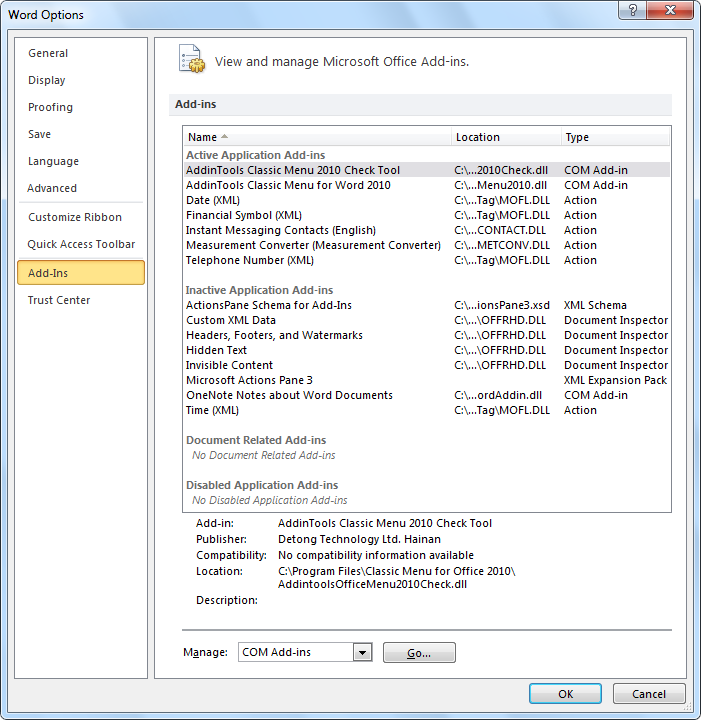

“For example, you might want to save your document in one of the paper-like formats for sharing, such as Open XML Paper Specification (OpenXPS) or the Portable Document Format (PDF), or as a Single-File Web Page document (MHT),” he said. Lastly, Document Inspector isn’t meant to act as a converter for WYSIWYG (what you see is what you get) file types. “It’s important to remember that the Document Inspector is not designed to take the place of common workflow processes, such as technical and legal review, peer review and editorial review.” Nor should the tool be used to take shortcuts during the content creation and management process, he added. “For example, in Excel, you can put data in a far off row or column that you might not see when casually reviewing the spreadsheet, or in Word or PowerPoint, you could cover some data with a picture and forget it’s there.” Users “should keep in mind that there are items that the Document Inspector is not designed to detect,” he said. While the new features shed some much-needed light on hidden data, it’s no substitute for good practices, Kraynak wrote. For instance, if a filter condition is set to contain “secret,” “you may still see the word ‘secret’ if you look at the filter condition” even if all the rows are deleted. “When you use filters in your workbook, the filter conditions are cached in the workbook, even if you delete the rows that contain those values,” explained Kraynak. Similarly, Excel’s active filters may give away too much information. “Macros (VBA Code), forms, and ActiveX Controls may contain personal or private information that is not readily visible in your document, but someone who goes looking would be able to find it,” Kraynak wrote. It’s worth poking around using Document Inspector, according to Kraynak. Excel users also gain the ability to detect a lengthy list of document attributes, including links to other files, PivotTables, PivotCharts, cube formulas, slicers and timelines (Excel 2013), to name a few. With the addition of several new inspection modules, users can now uncover embedded documents, macros, forms and ActiveX controls in Excel, PowerPoint and Word Files. “In some cases, it will remove such items from your document in other cases, it alerts you even if it can’t automatically remove the items,” continued Kraynak. As the co-authoring feature of Office 2010 is quite famous and many users work on the same document at the same time, it is a good idea to use the Document Inspector before you share an electronic copy of your Office document, such as in an e-mail attachment.


Document Inspector enables Office users to prepare “documents, presentations, or workbooks for publishing and sharing by checking for items that may contain hidden or private information,” he explained in a Dec. The Document Inspector feature of Office lets you check your document for hidden properties and personal information. In updates for Office 20, Microsoft has added new tools to the Document Inspector feature in Excel, PowerPoint and Word, announced Steve Kraynak, a Microsoft Office program manager. If not managed properly, they can reveal more about an organization than users intend, potentially landing them in hot water. Office files are a trove of metadata and other hidden information.


 0 kommentar(er)
0 kommentar(er)
